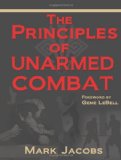[This is part 2 of a two part “Getting it Right” series by author and martial arts instructor Mark Jacobs. This series is aimed at helping authors understand and add meaningful and convincing detail in writing fight scenes. Part 1 can be found here.]
 Another fallacy is that a trained martial artist can kill an opponent with a single blow to the heart. Though I’ve previously written about my enjoyment of the martial arts action/adventure novels by author Eric Van Lustbader, and have even praised some of his written fight scenes, when he starts describing the deadly “heart kite” strike, he strays into the realm of fantasy. Yes, in rare instances, people do die from blows to the chest that interrupt the heart rhythm – it’s occasionally happened in little league baseball games when fielders are hit with a line drive – but this is essentially a million to one shot that could never be done intentionally by a fighter.
Another fallacy is that a trained martial artist can kill an opponent with a single blow to the heart. Though I’ve previously written about my enjoyment of the martial arts action/adventure novels by author Eric Van Lustbader, and have even praised some of his written fight scenes, when he starts describing the deadly “heart kite” strike, he strays into the realm of fantasy. Yes, in rare instances, people do die from blows to the chest that interrupt the heart rhythm – it’s occasionally happened in little league baseball games when fielders are hit with a line drive – but this is essentially a million to one shot that could never be done intentionally by a fighter.
Even more ludicrous is the concept of a “delayed death touch,” a strike that can be timed to kill a person at a later date. Again, a person might receive an injury during the course of a fight that later causes him to fall over dead but this is sheer bad luck and not something anyone can intentionally do to another person.
Besides technique fallacies, the second major category of mistakes seen in this area are the simple informational/factual errors that authors commonly make when writing about the martial arts. Years ago, it was common to refer to “the judo chop.” But anyone who bothers to do a little bit of research will quickly discover judo is a wrestling style and has no “chop.” That is a karate technique, where it is more commonly known as a “knifehand” or, in Japanese, as a “shuto.”
Speaking of judo and karate, authors frequently toss such terms around without really knowing what they are talking about.
Though James Clavell’s Shogun was an excellent piece of fiction, it left a lot to be desired as a piece of history. Clavell has some of his 16th century Japanese samurai doing judo and karate. He would have saved himself a bit of embarrassment if he did a little more research and learned that judo is a modern art only dating back to the late 19th century and karate originated in Okinawa and didn’t come to Japan until the early 20th century. And don’t even get me started on ninjutsu…
The bottom line is, literary fight scenes and other depictions of martial arts and general violence do not have to be completely realistic but they should not be totally inaccurate. With a little bit of effort, writers can get their basic facts straight. And if they can’t come up with the hard facts they need for a fully realistic portrayal, they can always leave some of the action shrouded in mystery. A brilliant example of this latter technique comes in the novel Shibumi, in which the author, Trevanian, describes his master assassin, Nicholai Hel, as an expert in the esoteric Japanese martial art of “hoda korosu” or “naked/kill” which makes uses of common everyday items to kill people with. To the best of my knowledge, there is no specific martial art like this but Trevanian gets around this problem by including a footnote explaining it would be irresponsibly dangerous to describe the exact nature of this art or its techniques since some readers might misuse them. Not only does he brilliantly get to avoid describing the techniques in detail but he creates a sense of awe and wonder in the reader (Wow! That sounds so dangerous, I’d love to be able to do it!).
And this, as much as anything, is what a good writer should strive to accomplish with his action scenes. Just don’t make too many mistakes to distract from that awe and wonder.
* * * * *
Mark Jacobs is a freelance writer, martial arts instructor and semi-professional poker player who regularly plays for more money than he can afford to lose. His written work has appeared in publications such as Sports Illustrated, Men’s Health and TimeOut New York. The author of the acclaimed instructional text,The Principles of Unarmed Combat, he currently serves as a monthly columnist for Black Belt Magazine. His novels include the detective novel,Pascal’s Wager, and the upcoming boxing saga, A Bittersweet Science. You can learn more about Mark on his blog, and on his Amazon.com Author’s Page.

This is a fantastic article. Thanks for sharing your knowledge, Mark!
Fascinating, I love a guy who is serious about getting death right. 🙂
Excellent. We do need to beware we do not stretch the 'suspended disbelief' in our readers too much.